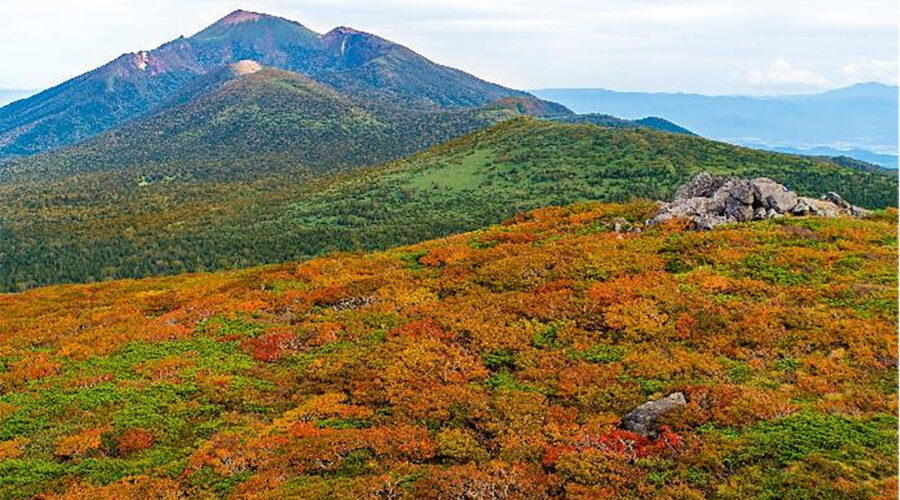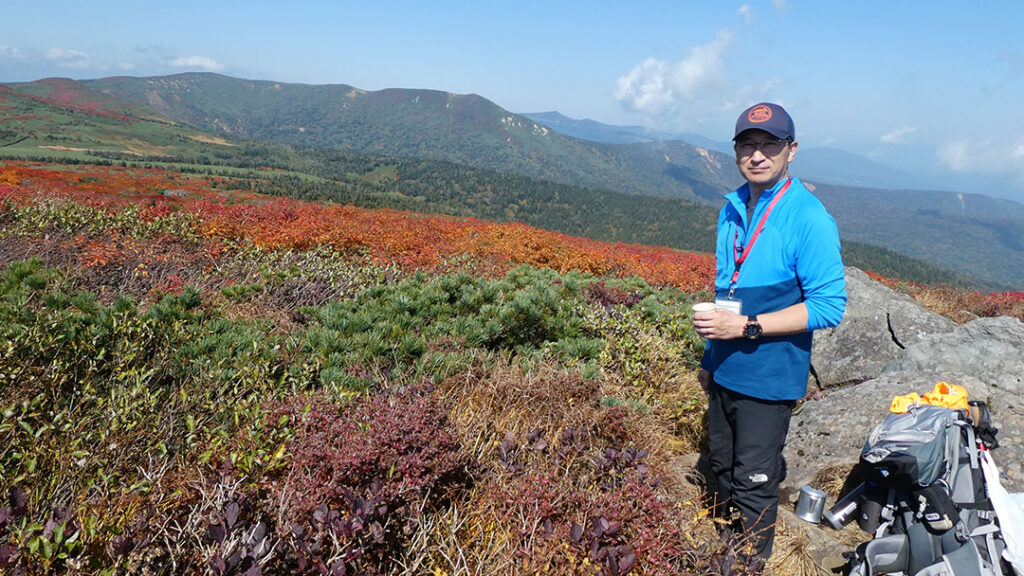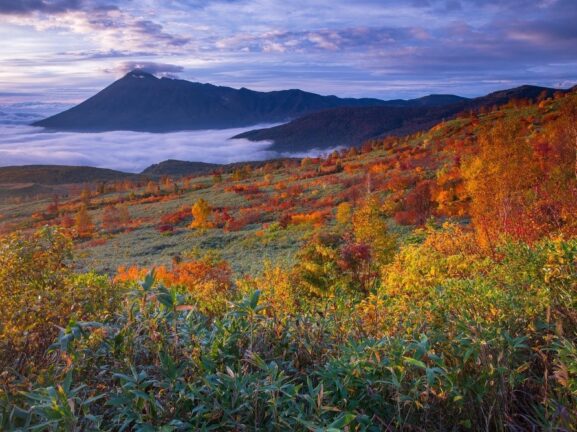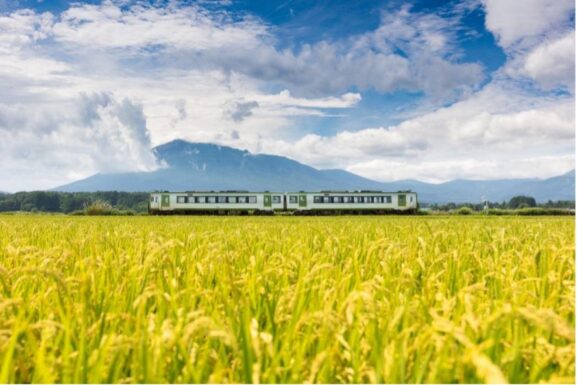The Earliest Autumn Scenery in Honshu! Plus, Matsukawa’s Hidden Springs
Ura-Iwate Ridgeline Course:
Elevation Gain – 793m
Course Time – 8hrs 50min (1-day trek possible)
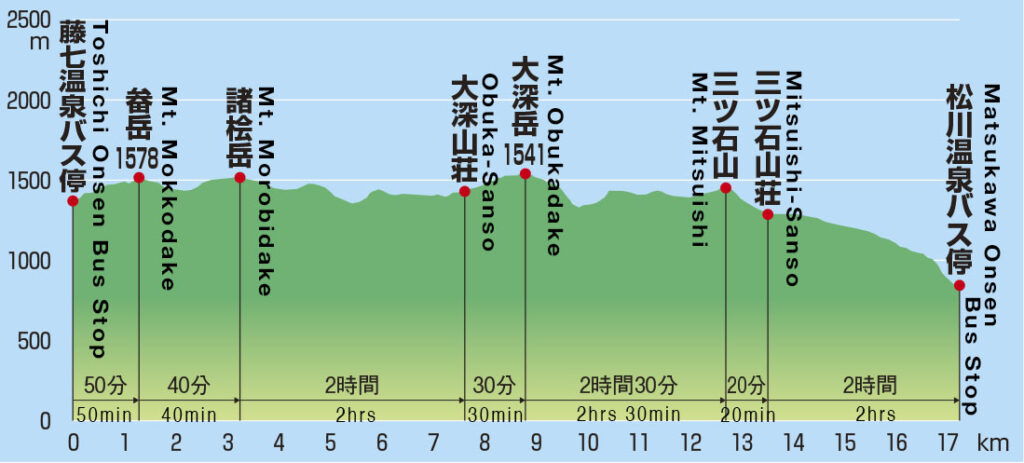
Amazing Scenery That Can’t be Caught in a Single Day!
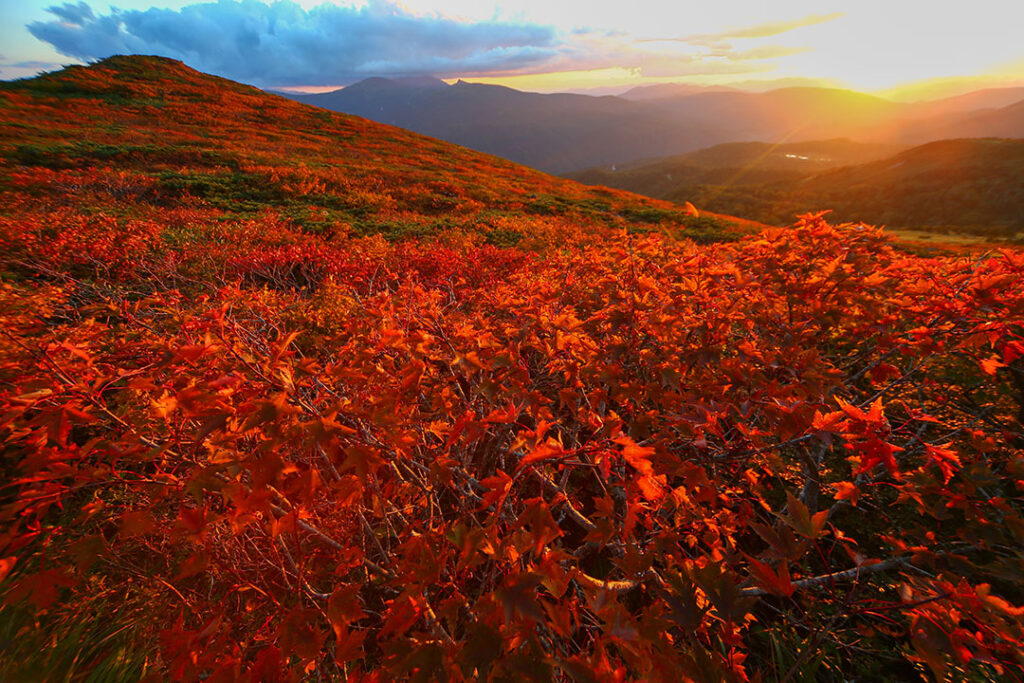
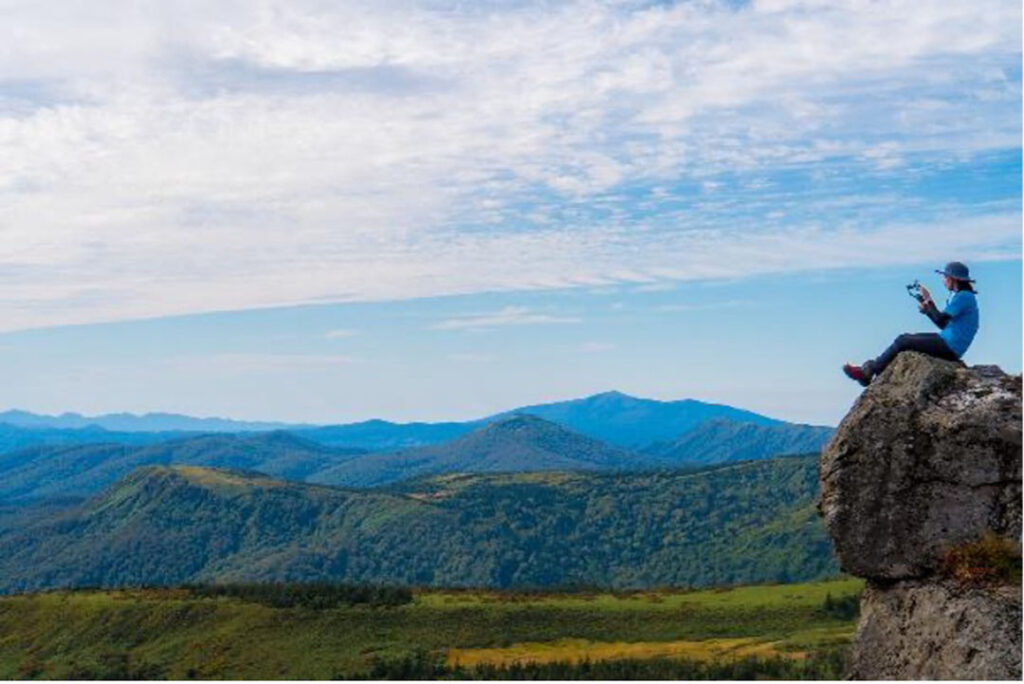
- Video from Hachimantai DMO
- Drone footage of Mt. Mitsuishi’s lava remains and autumn foliage.
- Hachimantai Onsenkyo Web Portal
- A site made for provide information for those interested in visiting the Onsenkyo area, which is popular for longer stays and villas.
- 2022 Hachimantai Trekking Bus Map
- Combining Hachimantai’s best trekking routes and the bus routes to get you there in one map.
The closest bus stop to the Mitsuishi Mountain Cottage is the Matsukawa Onsen stop.
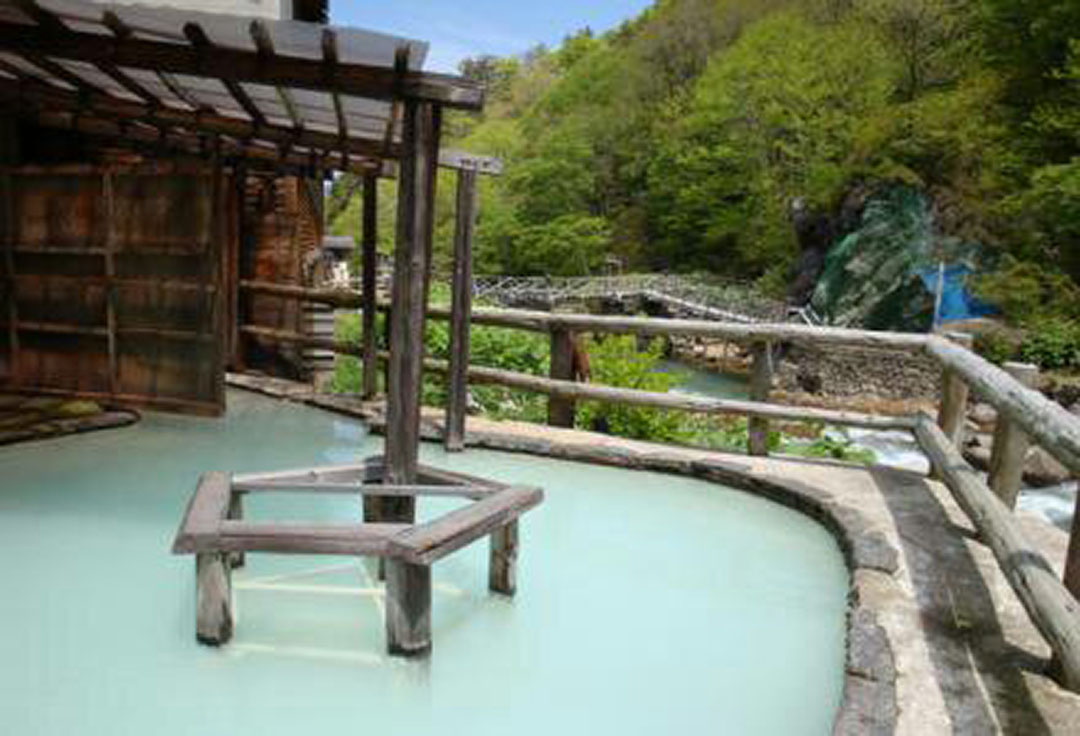
Matsukawa Onsen Shofu-so
- Matsuo-Yoriki 1-41, Hachimantai City, Iwate Prefecture 028-7302
- 0195-78-2245
- Matsukawa Onsen Shofu-so website
- Daytime Onsen Hours: 8:00 – 20:00
- Adults ¥600 / Children ¥300 (5yrs to elementary age)
- Overnight Rooms (two meals per night)
- Check-in: 15:00
- Check-out: 10:00
- Rooms are unavailable each Tuesday and Wednesday, and the baths are closed each Wednesday.
Matsukawa-so is located perfectly in the middle of the three facilities. They have two indoor baths each for men and women, two roofed female outdoor baths, and an additional mixed outdoor bathfor a total of seven baths, all fed by all-nature springs. They have both hot and lower-temperature springs, and their waters are a milky, yet uniquely vibrant blue.
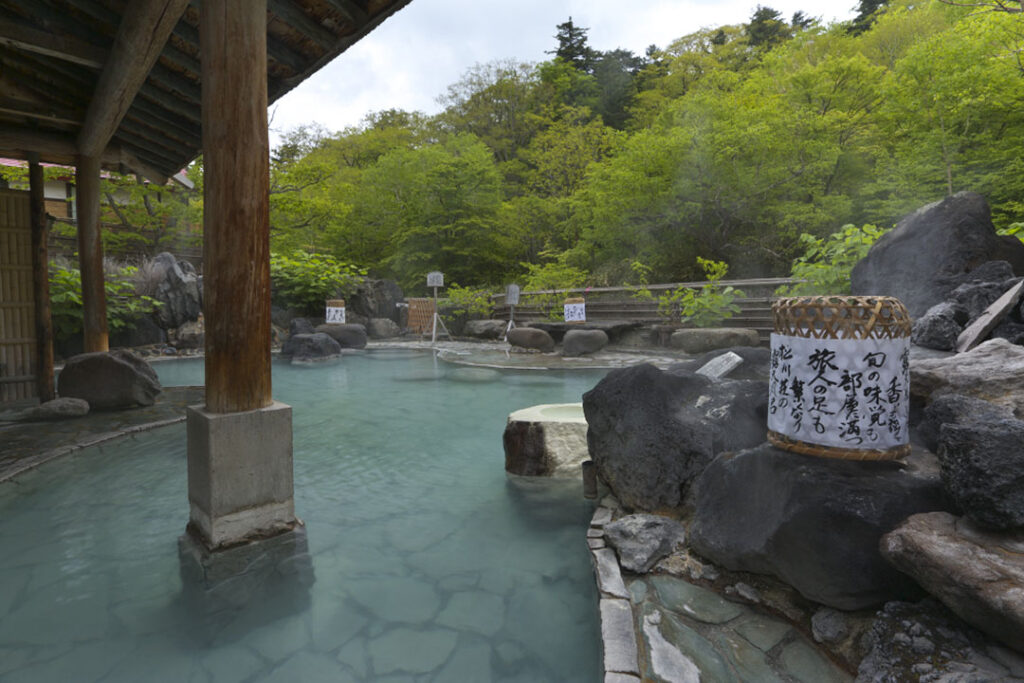
Perhaps Matsukawa-so’s greatest attraction is its incredibly large mixed outdoor bath. Able to seat 50 people, it was featured in JR East’s “Let’s Go! Tohoku” campaign. Next to the outdoor bath is there “Egg Hall,” where you can make your own boiled eggs by dipping them in the heated onsen water. At ¥75 per egg, it’s a tasty snack that you can eat right there or take home with you, and they also provide supplies to draw on and decorate the shell. If you like, they’ll even provide a carton for you to insert up to 5 eggs in as a souvenir, free of charge (while supplies last)!
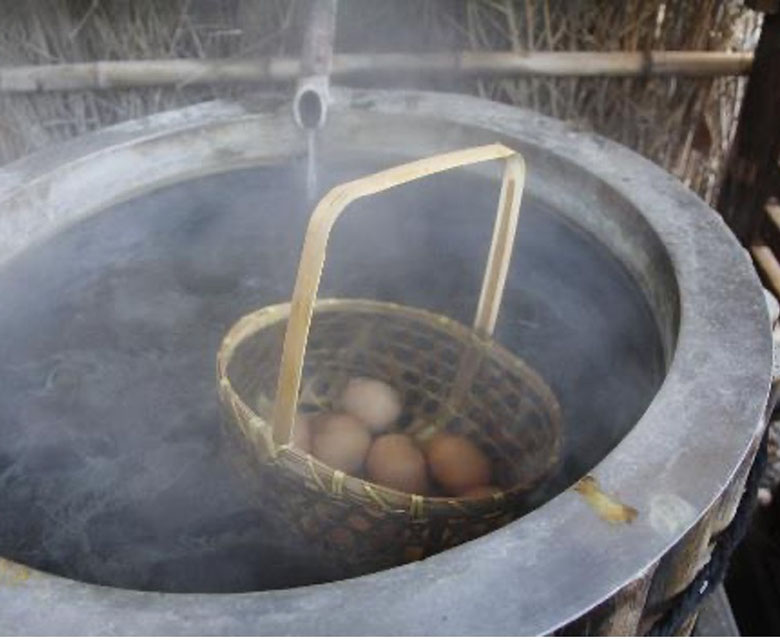
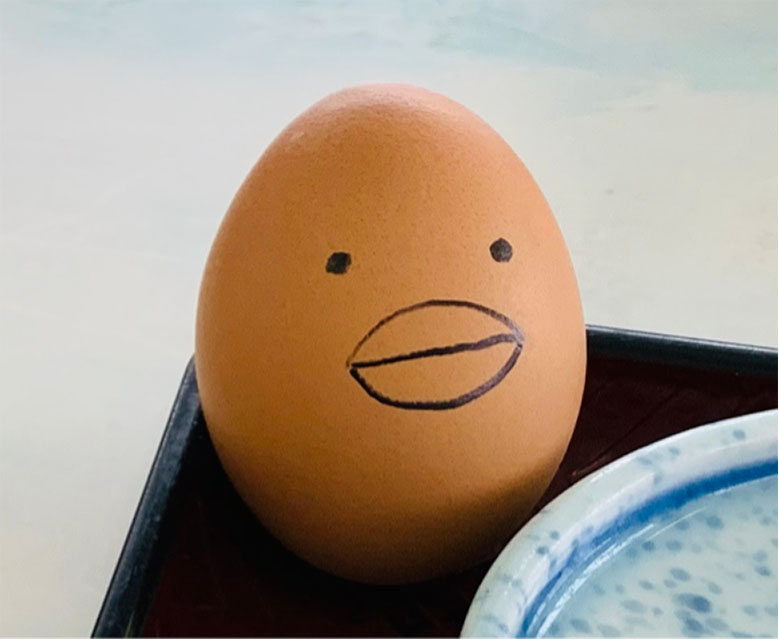
Matsukawa Onsen Matsukawa-so
- Matsuo-Yoriki Matsukawa Onsen, Hachimantai City, Iwate Prefecture 028-7302
- 0195-78-2255
- Matsukawa Onsen Matsukawa-so website
- Daytime Onsen Hours: 8:00 – 18:00 (no entry past 17:00)
- Adults ¥600 / Children ¥300 (5yrs to elementary age)
- Parlor room available for reservation at extra cost
- Overnight Rooms
- Check-in: 15:00
- Check-out: 10:00
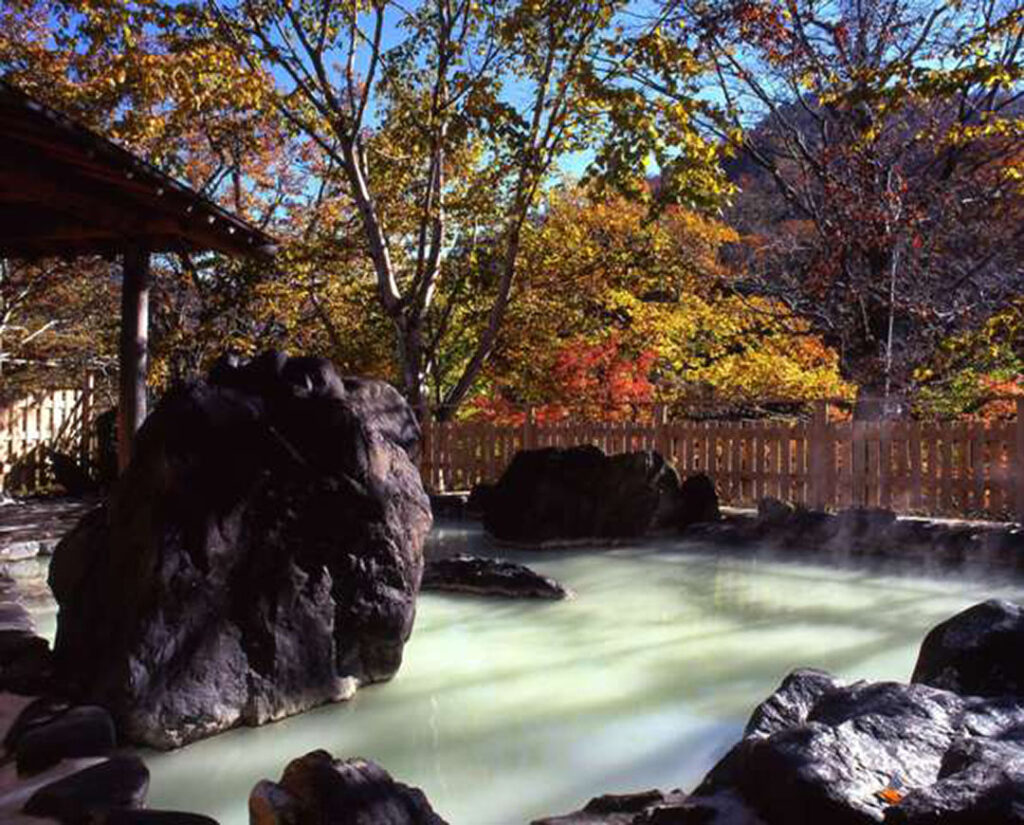
Kyoun-so is located nearest to the mountain summit. It has one male and female indoor bath each, one female outdoor bath, and one mixed outdoor bath making four total baths. Compared to the other two, their waters are a cloudy viridian. It is separated into two buildings. While the main building has been renovated to provide a modern hotel-like atmosphere, the older side building used to be the focus of a health spa, and has a much more historic and nostalgic aura.
The mixed outdoor bath is adorned with several large boulders here and there for a decidedly rustic feel. Maybe visitors nervous about mixed bathing will find this helpful in addition to the cloudy waters for concealment? The surrounding scenery provided by the beech and oak trees is draped in gorgeous emerald in summer, rich gradients in fall, and pure white snow in winter, making it a beautiful bathing experience throughout the year.
Matsukawa Onsen Kyoun-so
- Matsuo-Yoriki Matsukawa Onsen, Hachimantai City, Iwate Prefecture 028-7302
- 0195-78-2256
- Matsukawa Onsen Kyoun-so website
- Daytime Onsen Hours: 8:30 – 19:00 (No entry past 18:00)
- Adults ¥600 / Children ¥300 (5yrs to elementary age)
- Parlor room available at extra cost.
- Overnight Rooms (Two meals per night)
- Check-in: 15:00
- Check-out: 10:00
- Closed irregularly

